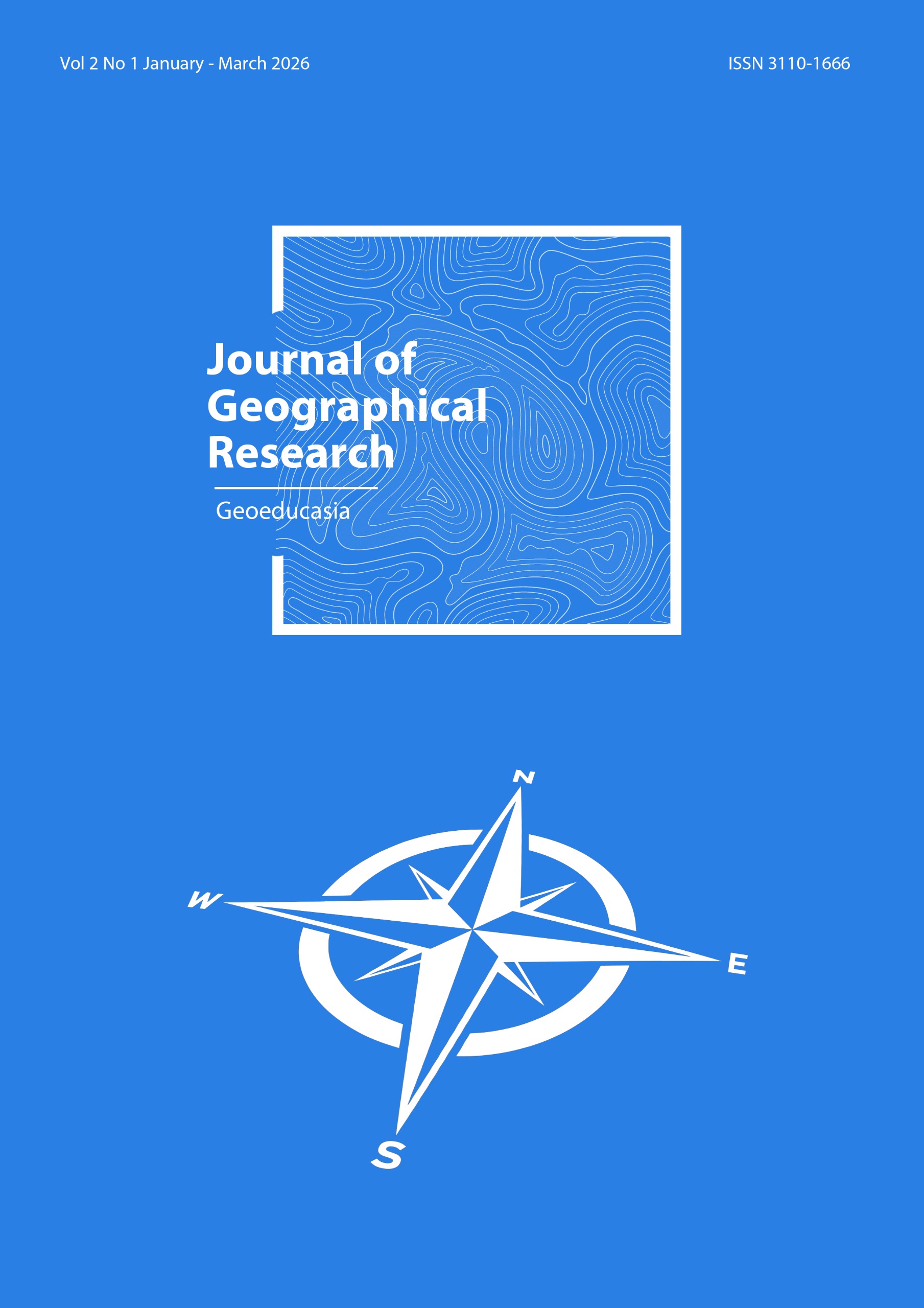
The title of the manuscript should be written on the top of the first page with the centre text alignment. Meanwhile, the author’s name (without an academic degree), and the affiliation address of the author should be written with the centre text alignment also under the title of the article. The author should give two line spaces between the title and the author’s name. Then, the space between the author’s affiliation address and the abstract title is one space. The keywords must be written below the overall abstract for all words. Those should be separated by a semicolon and maximally four words.
The responsible author, the correspondence author, or the corresponding author must be written first and then followed by the second, the third, and so on. The communication regarding the article revision and the final statement will be informed via email to the corresponding author only. If there is more than one author, the author’s names should be written down separately by a comma (,). If the author’s name consists of at least two words, the first name should not be shorted. If the author’s names are only one word, it should be written as it is. However, in the online version, it will be written in two words with the same name repeatedly for the purpose of metadata indexing.
The manuscript text general guidelines are as follows:
The title of the manuscript: The title should be informative and be written both briefly and clearly. It cannot diverse multi interpretations. It has to be pinpoint with the issues that will be discussed. The beginning word is written in the capital case and symmetrically. The article title does not contain any uncommon abbreviation. The main ideas should be written first and followed then by its explanations. The article title should be written within maximally 15 words in Bahasa Indonesia or in English, 13 pt-sized font, with the bold selection and in the centre text format,
An abstract is written in Bahasa Indonesia or English. The text must be in Roboto, 10,5 pt font size, 1,15 line-spacing, within 150-200 words and followed by five keywords. The abstract must contain the background, aims of the project, methods, results, and conclusion.
Introduction: The introduction must contain (shortly and consecutively) a general background and a literature review as the basic of the brand new research question or show the main limitation of the previous researchers and to solve it (gap analysis), show the scientific merit or novelties of the paper, and the hypothesis. In the final part of the introduction, the purpose of the article writing should be stated. In the scientific article format, it does not allow to write down the references as in the research report. They should be represented in the literature review to show the brand new of the scientific article.
Methods: The method is implemented to solve problems, including analytic methods. The methods used in the problem solving of the research are explained in this part.
Result: This part consists of the research results and how they are discussed. The results obtained from the research have to be supported by sufficient data. The research results and the discovery must be the answers or the research hypothesis stated previously in the introduction part.
Discussion: The discussion should explore the significance of the results of the work, not repeat them. Make the discussion corresponding to the results, but do not reiterate the results.
The following components should be covered in the discussion: How do your results relate to the original question or objectives outlined in the Introduction section (what/how)? Do you provide an interpretation scientifically for each of your results or findings presented (why)? Are your results consistent with what other investigators have reported (what else)? Or are there any differences?
Conclusion: This is the final part containing conclusions and advice. The conclusions will be the answers of the hypothesis, the research purposes, and the research discoveries. The conclusions should not contain only the repetition of the results and discussions. It should be the summary of the research results as the author expects in the research purposes or the hypothesis. The advice contains suggestions associated with further ideas from the research.
References: All the references that used in the article must be listed in this part. In this part, all the used references must be taken from primary sources (scientific journals and the least number is 80% from all the references) that were published in the last ten years. Each article should have at least ten references.
All the served data or quotes in the article taken from the other author articles should attach the reference sources. The references should use a reference application management such as Mendeley. The writing format used in Jurnal GeoEducasia: Journal of Geographical Research follows the format applied by APA *7th Edition* (American Psychological Association).
The manusript should be submitted by Online Submission System in the GeoEducasia: Journal of Geographical Research HERE.
This journal does not charge APCs, submission charges, or other fees. All process of article publication is free of charge.
The names and email addresses entered in this journal site will be used exclusively for the stated purposes of this journal and will not be made available for any other purpose or to any other party.

Editorial Policies
Home Focus and Scope Publication Ethics Editorial Team Reviewer Team Peer Review Process Open Accces Statement Copyright and License Anti Plagiarism Archive Policy Indexing Current Volume Archives Contact
For Authors
Author Guidelines Article Submission Authenticity Statement Author Fees
Download
|
Editorial Office: Universitas Negeri Yogyakarta |
GeoEducasia is licensed under Creative Commons Attribution-ShareAlike 4.0 International |
